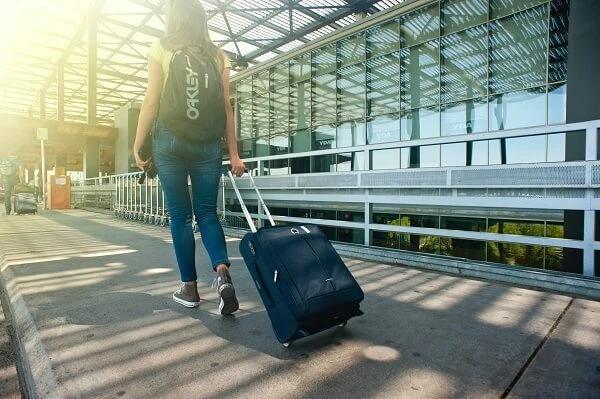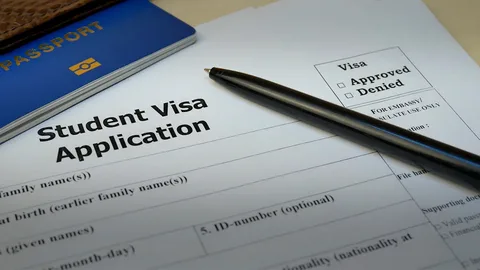A Student Visa is an essential document that allows international students to study in a foreign country. This visa is typically issued by the country you plan to study in, and it grants you legal permission to live and study there for a specified period. Whether you’re dreaming of studying in the United States, the UK, Australia, Canada, or another country, a student visa is often the first step in making your academic aspirations a reality. In this guide, we’ll walk you through everything you need to know about obtaining a student visa, including the types of visas, the application process, and the benefits of having one.
What is a Student Visa?
A Student Visa is a type of visa specifically designed for individuals who wish to study in a foreign country. These visas are typically short-term and granted based on the condition that the visa holder is enrolled in an accredited educational institution, such as a university or a college. In addition to the educational institution’s requirements, the visa holder must meet certain health, financial, and legal criteria before being approved for entry into the country.
Importance of Student Visas
Why Do You Need a Student Visa?
A Student Visa is necessary for international students who plan to study in a country where they are not a citizen. It grants students the legal right to live and study abroad, and without it, you may face restrictions on staying in the country for an extended period. Moreover, having a student visa often opens doors to benefits such as work permits, medical insurance, and post-graduation options like internships or job opportunities.
Benefits of Holding a Student Visa
- Legal Permission to Stay: A student visa gives you the right to reside in the host country for the duration of your academic program.
- Work Opportunities: In many countries, a student visa allows you to work part-time during your studies, providing financial support.
- Post-Graduation Options: Some student visas allow you to stay in the country after graduation for job-searching or work purposes.
Types of Student Visas
Different countries offer various types of student visas based on the type of educational program and your nationality. Here’s a breakdown of the most common types of student visas.
US Student Visa
The United States offers several types of student visas, with the most common being the F-1, M-1, and J-1 visas:
- F-1 Visa: For academic students enrolled in universities, colleges, or language training programs.
- M-1 Visa: For students pursuing vocational or non-academic studies.
- J-1 Visa: For exchange visitors participating in educational and cultural exchange programs.
UK Student Visa
The Tier 4 (General) Student Visa is the most common visa for international students wishing to study in the UK. It allows students to pursue a full-time academic program at a recognized institution.
Australia Student Visa
Australia offers a Subclasses 500 visa for full-time students. This visa allows students to live, study, and work part-time during their course of study.
Canada Student Visa
In Canada, international students are required to obtain a Study Permit, which functions as a student visa, to pursue studies at a designated learning institution.
How to Apply for a Student Visa
General Step-by-Step Guide for Obtaining a Student Visa
- Choose Your Program and Institution: Before applying for a student visa, you must first secure admission to an accredited educational institution.
- Gather Necessary Documents: Ensure that you have all the required documents, such as passport copies, proof of financial support, and an acceptance letter from your chosen institution.
- Complete the Application: Fill out the student visa application form and submit it to the relevant embassy or consulate.
- Attend an Interview (If Required): Some countries require a personal interview as part of the visa application process.
- Wait for Processing: Visa processing times vary, so be patient and ensure you apply well in advance.
- Receive Your Visa: Once approved, you will receive your student visa and be ready to travel.
Choosing the Right Country and Program
Choosing the right country and program is an essential first step before applying for a student visa. Factors to consider include the quality of education, visa requirements, language barriers, and cost of living.
Common Challenges in Student Visa Applications
Visa Denial Reasons
- Insufficient Financial Proof: Failing to demonstrate that you can afford your tuition fees and living expenses may result in a visa denial.
- Incomplete or Inaccurate Documentation: Missing or incorrect documents can delay or even cancel your application.
- Health Issues: Some countries require a medical examination before granting a student visa.
Delays and Processing Times
The visa application process can be lengthy, so students should apply well in advance of their intended travel date. Delays are often caused by high application volumes or additional document requests.
Working While on a Student Visa
On-Campus vs. Off-Campus Employment
Many countries allow students to work part-time while studying, either on-campus or off-campus. However, there are often restrictions on the number of hours you can work each week.
Internships and Part-Time Jobs
Internships and part-time jobs provide an opportunity for students to gain practical experience and earn extra income while studying abroad.
Post-Graduation and Extension Options
Work Permits Post-Graduation
Some countries offer work permits or visa extensions for graduates to stay and work in the country after completing their studies.
Title Here
Some countries offer work permits or visa extensions for graduates to stay and work in the country after completing their studies.
Visa Extension Process
If your course or program extends beyond the initial visa expiration date, you can apply for a visa extension to continue studying or stay in the country.

FAQs About Student Visas
Q1: How long does it take to get a student visa?
The processing time varies depending on the country, but it typically takes anywhere from a few weeks to a couple of months. Apply early to avoid delays.
Q2: Can I apply for a student visa without an admission letter?
No, most countries require an admission letter from an accredited educational institution to apply for a student visa.
Q3: Can I work full-time on a student visa?
In most countries, student visa holders are only permitted to work part-time during their studies, usually up to 20 hours per week.
Q4: Do I need to prove I can financially support myself?
Yes, many countries require proof that you can afford tuition fees and living expenses while studying.
Patner Companies






